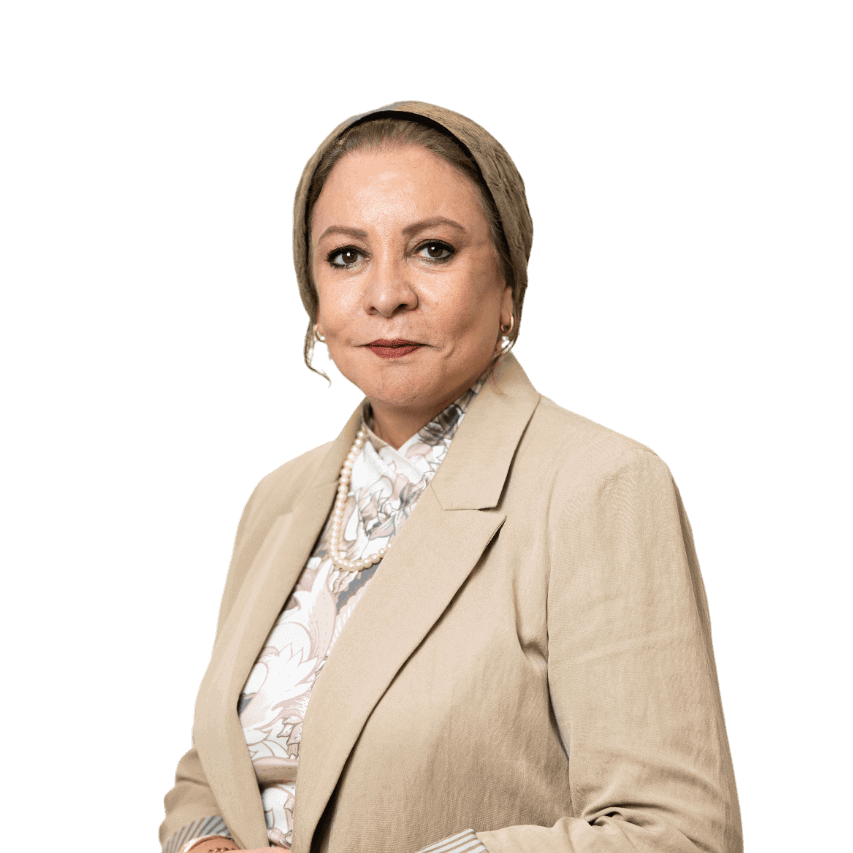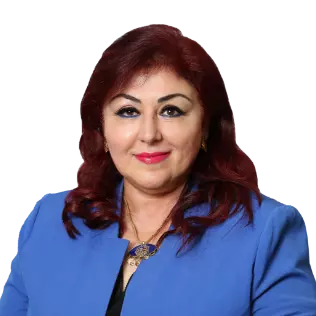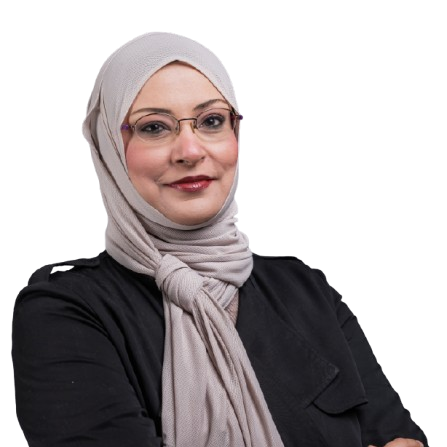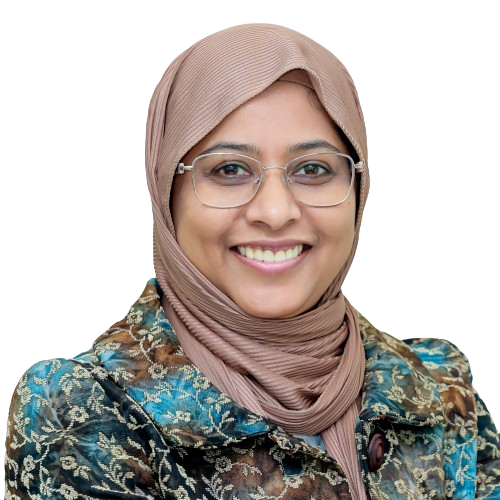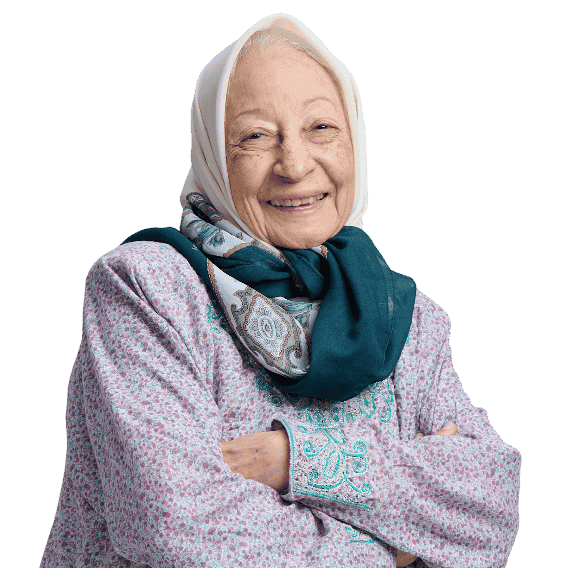Fibroids - Symptoms, Treatment, Causes & Types
Written By: Dr. Patretia Edward
Updated On:December 25, 2023

What are Fibroids?
Fibroids are uterine tumors comprised of muscle mass, tissue & cells. They are usually slow-growing, benign masses, with a less-than-one-percent chance of becoming cancerous. However, as fibroids can grow in different parts of the uterus, they can cause varying degrees of pelvic discomfort, cramps, & abdominal pain, in addition to heavy bleeding during menstrual cycles.
Uterine fibroids (Leiomyomas & Myomas) are made up of cells & connective tissue & are common in women who are in their childbearing years. Predominantly, fibroids are asymptomatic & can vary in size, from a few millimeters to the size of a tennis ball (or larger). They can also grow or shrink over time.
Different Types of Fibroids
Depending on the location of the fibroid in the uterus they can be classified as:
-
Subserosal Fibroids: Subserosal fibroids are the most common kind of noncancerous growth. They are found on the outer lining of the uterus & attach themselves either directly onto the uterine wall or through a stalk-line capillary.
-
Intramural Fibroids: Intramural fibroids grow between the muscles of the uterus & can expand to a large size if left untreated.
-
Submucosal Fibroids: Submucosal fibroids grow inside the uterus in the inner layers. As they are found inside the uterine cavity. They can grow to a size that can block the fallopian tubes, making it difficult for a sperm to reach an egg for fertilization, & impeding fertility & conception.
-
Pedunculated Fibroids: Pedunculated fibroids are also a kind of fibroid growth that can occur inside or outside the uterus. These noncancerous fibroids get their name from the stick-like growth (peduncle) that connects them to the inner or outer wall of the uterus.
What are the Symptoms of Fibroids?
Almost 20-80% of women will get fibroids by the time they are 50 years of age. A patient may manifest symptoms differently depending on the location & size of the fibroid. While most fibroids are benign & non-cancerous, as they grow in size, they can put pressure on organs in the abdomen, causing pelvic pain, bloating, frequent urination, rectal fissures, & bleeding.
Some common symptoms of fibroids include the following:
- Painful periods with heavy bleeding
- Anemia from heavy menstrual cycles that last longer than a week
- Pain during intercourse
- Bloating or an enlarged abdomen
- Frequent urge to urinate
- Constipation
- Back pain
- Infertility or difficulty in getting pregnant
When Should you See a Doctor for Fibroids?
It is a good idea to see a doctor if you have recurring heavy periods, constant pain in your lower back or pelvis, or have had more than one miscarriage. As research has found links between fibroids & family history, it is a good idea to consult with a doctor if you have:
- Frequent periods (more than once a month)
- Excessive bleeding during your period cycles
- Periods that continue for more than a week
- Have blood clots in your periods that are larger than normal
How are Fibroids Diagnosed?
Fibroids are easily diagnosed in a pelvic exam or an external or internal ultrasound.
In rare cases when a doctor cannot identify the source of pelvic pain, additional diagnostic tests can be undertaken. These include:
-
MRI: A magnetic resonance imaging (MRI) scan offers a detailed view of fibroids, where they are located, & how big they are in size to help provide concrete treatment plans & protocols.
-
Hysterosalpingogram (HSG): Used typically for women who are trying to conceive, an HSG test is an X-ray exam that injects a special dye into the uterus & fallopian tube for contrast imaging to view fibroids against other uterine tissue.
-
Hysterosonogram: A hysterosonogram is an internal ultrasound exam that checks for polyp growths, masses, & fibroids that cause heavy bleeding, pelvic discomfort, & pain.
-
Laparoscopy: In rare cases, a doctor may recommend a laparoscopy for a detailed view of the uterus & its surrounding area. This can help a doctor rule out other causes of pelvic pain & heavy bleeding like endometriosis or ovarian cysts for a clearer diagnosis & treatment plan.
What are Some of the Causes for Fibroids?
While the exact cause of fibroids is not known, research has shown that uterine fibroids tend to grow from stem cells in the myometrium (muscular wall of the uterus).
Some factors associated with uterine fibroids include:
-
Family History of Fibroids: If a patient has a family history of fibroids, there is an increased chance that she will develop fibroids. Ethnicity also plays a part as African-American women are more likely to develop fibroids than any other race.
-
Age: Though fibroids are commonly found in women between 30 & 40 years of age, they tend to shrink (if they already exist) or not form at all as women near menopause.
-
High Estrogen Levels: The hormones estrogen & progesterone that promote the uterine build-up in each menstrual cycle also encourage the formation of fibroids. As fibroids contain more of both of these hormones, they tend to be found mostly in women in their reproductive years. As women near menopause & estrogen & progesterone levels decrease, fibroids tend to shrink in size.
-
A Diet Rich in Red Meat, Alcohol, & Caffeine: Linkages have also been found between these foods & fibroid growth.
-
Other Factors: The onset of early periods at a young age, obesity, & a deficiency in Vitamin D has also been linked to fibroids.
What are the Risks Associated with Fibroids?
As fibroid growths are influenced by hormones, they are common in women during their childbearing years as a result of the menstrual cycle. They naturally tend to shrink post-menopause. However, research has found ethnicity & race plays a role in developing fibroids, therefore, African American women typically develop fibroids at a younger age, where symptoms tend to worsen as they age.
Other factors impacting a patient’s risk of developing fibroids include:
- Family history of fibroids (mother, aunts)
- Being overweight
- Hypertension
- Age of patient
- No previous pregnancy
- A shortage or deficiency in Vitamin D
What are Some of the Complications Associated with Fibroids?
Though fibroids are predominantly benign masses that are rarely cancerous, they can impede normal life functions. It is advisable to consult with a doctor for treatment options if you suffer from heavy periods, anemia from blood loss due to excessively long menstrual cycles, constant fatigue, & persistent lower back & pelvic pain.
Pregnancy & Fibroids
Most women at some point during their reproductive years will manifest fibroids; however, as they are mostly benign masses, they do not cause huge debilitating problems. Additionally, while fibroids do not necessarily impact fertility or the ability to get pregnant, submucosal fibroids that grow to large sizes on the inner lining of the uterus can cause a blockage of the fallopian tubes or miscarriage. Fibroids can also raise the risks of placental abruption, fetal growth restriction, preterm delivery, & other pregnancy complications.
What are the Treatment Options for Fibroids?
As fibroids are most common in women at the peak of their reproductive years, the most conservative course of action is to wait & observe. Usually, fibroids shrink on their own as you approach menopause. However, depending on your symptoms, age, fertility goals, & the number & size of fibroids, a doctor may recommend one or more of the following treatment options:
- Medication: A medication plan that lowers the level of estrogen in your blood may be recommended to reduce the size of a fibroid. This is usually prescribed as a first course of treatment in women who are scheduled for surgery for the removal of a fibroid.
- Uterine Fibroid Embolization (UFE): Another method to reduce the size of a fibroid is through uterine fibroid embolization, a radiological procedure that restricts blood flow, depriving the fibroid of the nutrients it needs to grow.
- Surgery: In rare cases when the symptoms are severe & medicine & hormonal treatment options have failed, a patient may be advised to undergo surgery.
Some of the surgical procedures that help treat fibrouds include:-
Hysterectomy: A hysterectomy is the surgical removal of the uterus. It is usually performed as a last-case measure when laparoscopic surgery & other courses of treatment have been unsuccessful. As hysterectomies require that the entire uterus be removed, it is often only recommended as a treatment option for patients who have either severe symptoms, do not plan to have children, or have already reached menopause.
-
Myomectomy: Myomectomy is an alternative surgical treatment to hysterectomy & is prescribed for women still looking to have children. It removes fibroid growths from the inner wall of the uterus. Depending on the size & location of the fibroids, a doctor may recommend laparoscopic (key-hole surgery) or open abdominal surgery.
-
Hysteroscopic Resection: A hysteroscopic resection is a minimally invasive surgery directed by a thin telescope that is inserted through the vagina into the uterus to treat submucosal fibroids. It can be conducted both under general or local anesthesia & requires little recovery time. In a hysteroscopic resection, the hysteroscope has to be inserted multiple times to treat the fibroids & a patient can feel discomfort & abdominal cramps for a few hours post-procedure.
- Hysteroscopic Morcellation: A hysteroscopic morcellation uses a specially-designed instrument called a morcellator to remove & cauterize fibroids. It differs from a hysteroscopic resection in that the hysteroscope only has to be inserted once through the cervix, reducing the risk of injury to the uterus.
-
Meet our doctors from the Obstetrics & Gynaecology department










